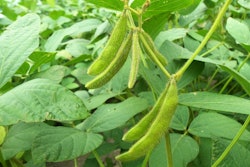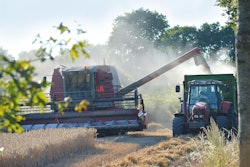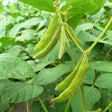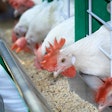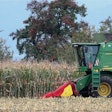
In a groundbreaking achievement, scientists, led byUniversity of Nebraska–Lincolnresearcher James Schnable, have successfully mapped thecomplete genomeof corn. This milestone development promises to revolutionize the future of agriculture, offering invaluable insights into crop health, resilience, and productivity.
Published recently in the prestigious journal Nature Genetics, the study titled "A Complete Telomere-to-Telomere Assembly of the Maize Genome" represents a significant leap forward in the field of genetics, coming on the heels of the human genome's complete mapping just a year ago.
The corn genome, due to its sheer size and complexity, has long posed a formidable challenge for scientists seeking to decode its genetic makeup. Over the years, technology has made strides in this area, with the first draft of the corn genome emerging in 2009. However, numerous gaps remained, comprising over 100,000 unresolved genetic sequences.
James Schnable, the Charles O. Gardner Professor of Agronomy, explained, "Our team drew on the latest technology, plus the particular expertise of the individual team members, and that finally made possible the mapping of the complete corn genome."
A significant aspect of this achievement was the resolution of complex genetic regions containing nearly identical paralogs – genes that are so similar they were previously indistinguishable. Corn's genetic repetition presents an extraordinary challenge, with vast stretches of genetic material intermingled, making it difficult to pinpoint individual gene functions.
With the complete analysis of a well-studied corn line known as Mo17, Schnable noted, "we're now able to resolve each of those individual genetic copies and start to do a better job of figuring out what individual genes do, rather than having all this combined into a mishmash where it's hard to figure out which gene is doing what."
The project's origins can be traced back to Chinese researchers who initiated the international collaboration. Schnable, who had known Jinsheng Lai, a Chinese scientist and the paper's lead author, for over a decade, was invited to participate due to his expertise in the field.
The fully sequenced corn genome holds immense potential for developing improved corn varieties by enhancing the understanding of how genetic differences influence traits. Schnable explained, "Rather than conducting selection, we will have the potential to design and engineer corn varieties to adapt to changing climates and grow in more nitrogen-limited conditions."
This breakthrough also opens doors for the creation of higher-value secondary products, such as additional value for dried distillers grains from ethanol plants.
The research builds on the University of Nebraska's rich history of pioneering work in corn genetics, with early figures like Rollins A. Emerson and George Beadle, a Nobel Prize laureate, making significant contributions to the field. Charles O. Gardner, for whom Schnable's professorship is named, continued this legacy in the 1960s and '70s.
Now that the corn genome is fully sequenced, scientists can embark on essential follow-up research to study and understand the function of individual genes previously unidentified. Schnable emphasized the university's advantage in this endeavor, given its robust research and Extension network and the ability to grow corn varieties across a wide range of environments.
"We can develop those varieties that will thrive," Schnable said, highlighting the potential for this research to contribute to a more sustainable and resilient future in agriculture.





